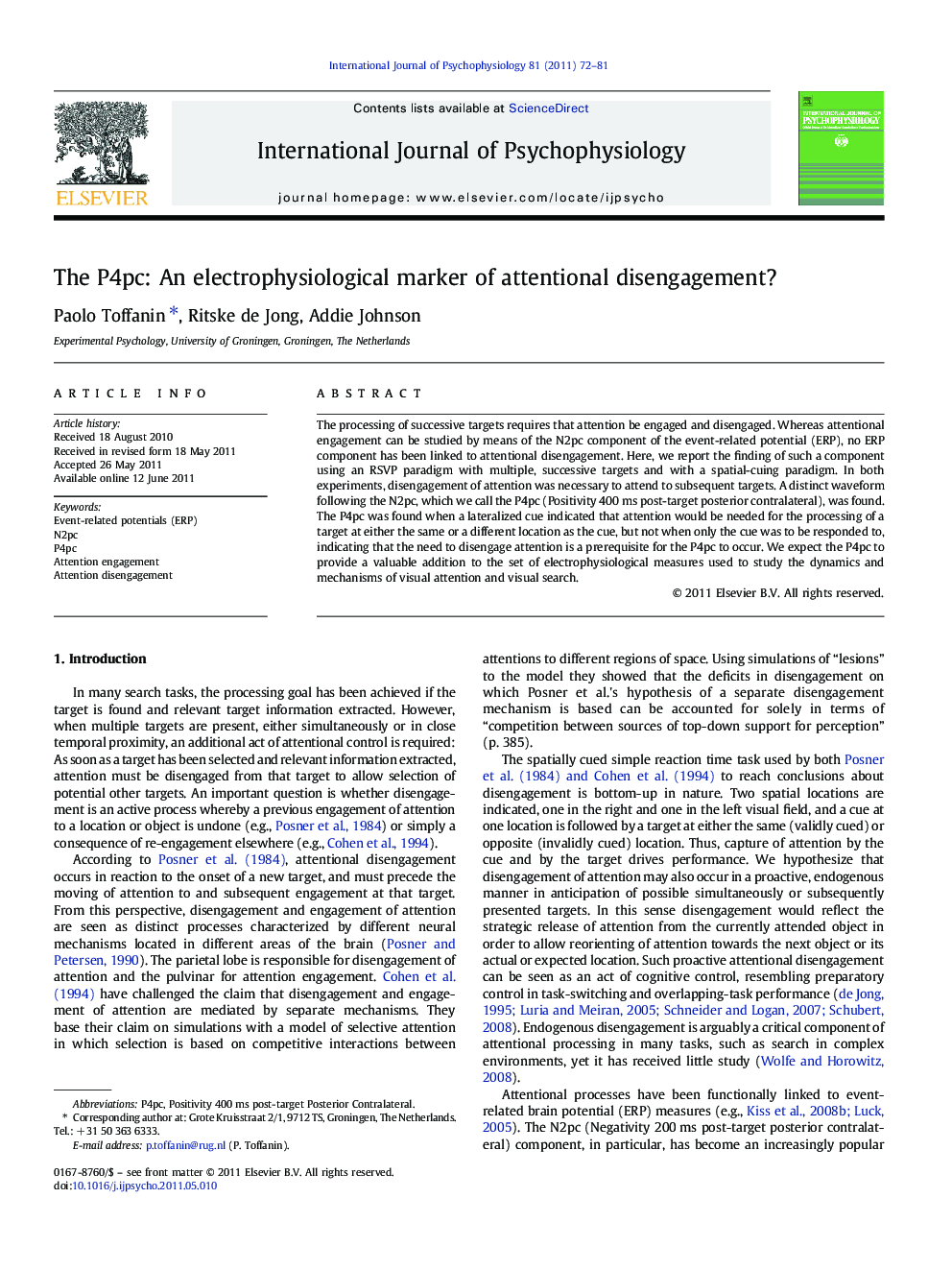| Article ID | Journal | Published Year | Pages | File Type |
|---|---|---|---|---|
| 930668 | International Journal of Psychophysiology | 2011 | 10 Pages |
The processing of successive targets requires that attention be engaged and disengaged. Whereas attentional engagement can be studied by means of the N2pc component of the event-related potential (ERP), no ERP component has been linked to attentional disengagement. Here, we report the finding of such a component using an RSVP paradigm with multiple, successive targets and with a spatial-cuing paradigm. In both experiments, disengagement of attention was necessary to attend to subsequent targets. A distinct waveform following the N2pc, which we call the P4pc (Positivity 400 ms post-target posterior contralateral), was found. The P4pc was found when a lateralized cue indicated that attention would be needed for the processing of a target at either the same or a different location as the cue, but not when only the cue was to be responded to, indicating that the need to disengage attention is a prerequisite for the P4pc to occur. We expect the P4pc to provide a valuable addition to the set of electrophysiological measures used to study the dynamics and mechanisms of visual attention and visual search.
Research highlights► A marker of disengagement of attention from a lateralized target is identified. ► This positive, posterior, contralateral peak (P4pc) is related to top-down control. ► P4pc occurs independently of shifts of attention and masking.
